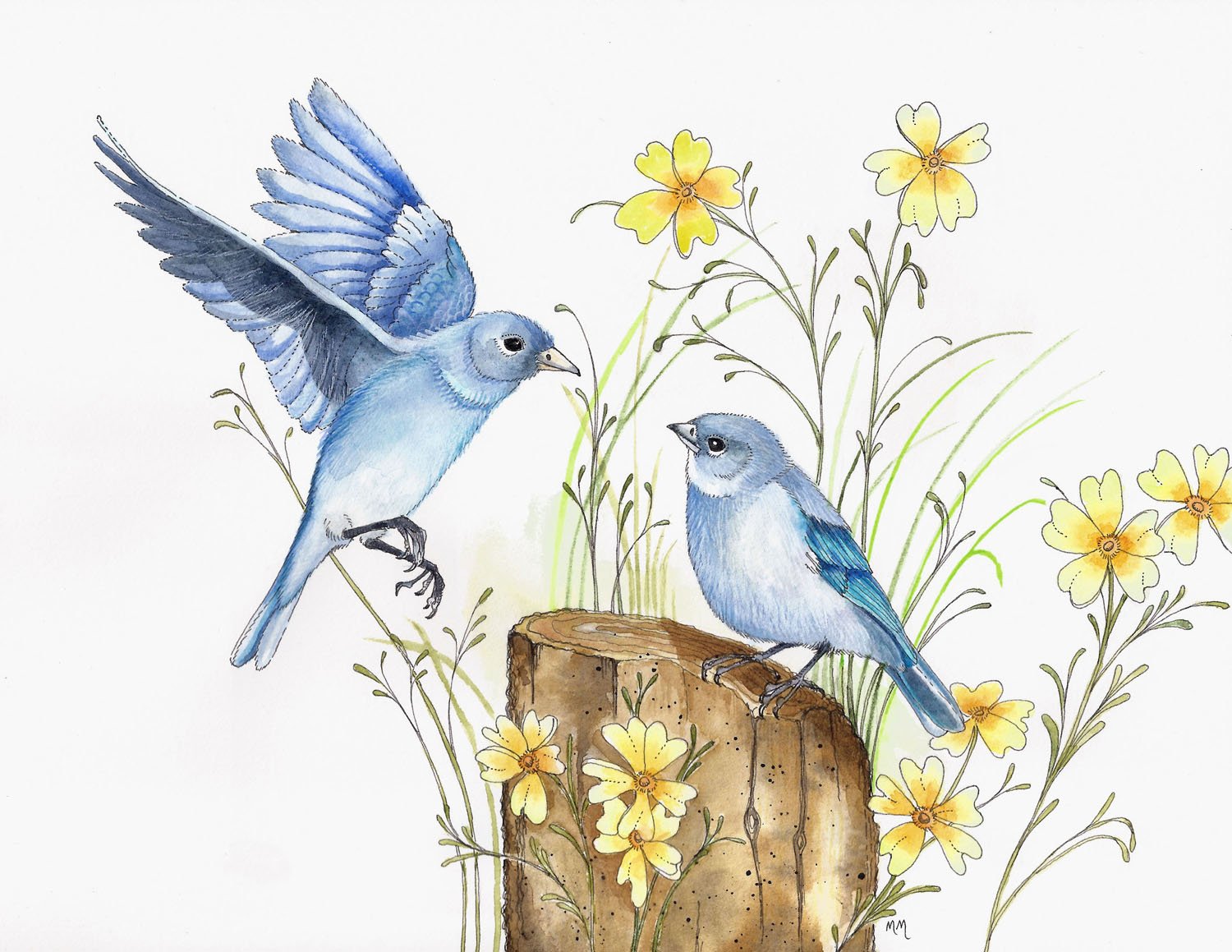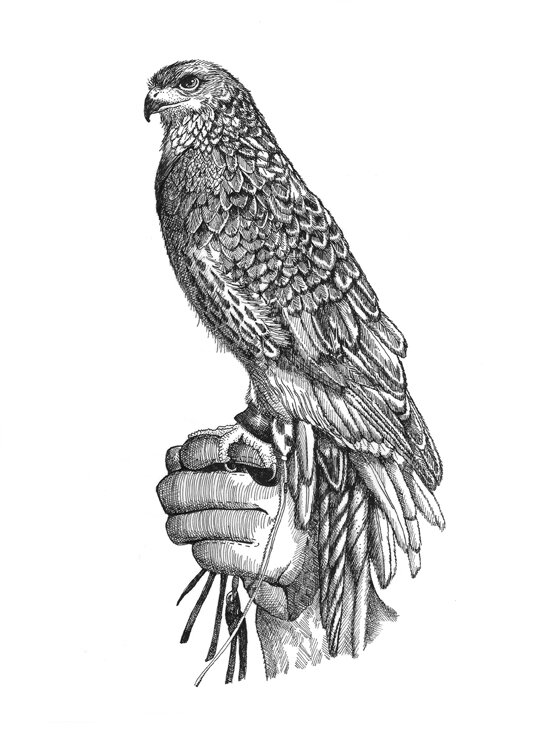With the addition of a fine round 00 watercolor brush and Titanium White by Winsor & Newton I was able to represent the fine detail of the feathers on these Mountain Bluebirds.
Mountain Bluebird watercolor
Mountain Bluebird watercolor
Your Custom Text Here

Mountain Bluebird watercolor
With the addition of a fine round 00 watercolor brush and Titanium White by Winsor & Newton I was able to represent the fine detail of the feathers on these Mountain Bluebirds.
I am using some new watercolor paints with these ACEOs, ‘Daniel Smith Jean Haines’ master artist set’. A few tubes are especially nice, the Green Apatite Genuine lets you create a beautiful range of greens – fresh yellow-green to deep olive – within a single tube, just great for leaves and nests. The Moonglow has a three-pigment blend that is just amazing when you add water. The imperial Purple according to Daniel Smith is “Rich in texture, and highly saturated, will granulate to reveal shades of plum and ultramarine.” These professional level watercolors are so satisfying to work with.
Found on eBay
Available on eBay.
This series of ACEOs is along the theme of “mouse in a teacup”. Lots of artists have used this to create cute paintings and drawings. So here’s my take on an old theme. Not just a mouse in a teacup but several hummingbirds, a wren, a chickadee, a ginger kitten, a hedgehog and lastly a guniea pig! All sporting different cups.
Found on my eBay shop.
To create depth in my painting I starting with a good sketch then apply masking fluid to the pine needles. Then added a wet on wet wash for the background with slightly darker colors to give the impression of the nest deep in the tree foliage.
Following in the line of my last post, here are more cat paintings. Still trying to capture the feline character in watercolor and pen & ink for these little ACEO art cards (sold on eBay). . . . the last painting below is so much prettier in person just doesn’t show well on the screen.
With the desire to learn how to paint cats with watercolor and pen & ink I began a project of making several paintings a day. Having found cats to be a difficult subject I am determine to break the barrier keeping me from representing them with ease. Cats seem to be a popular subject for ACEO cards so this is a perfect venue for this project. Here is my progress so far. I think I am getting the eyes pretty good but still have a ways to go on the shape of the head and the representation of fur
Some of these are available on my eBay shop.
Do you remember what these little original paintings are? ACEO stands for Art Card Editions and Originals. Small works of art about the size of a trading card. These allow people without much art budget to collect art, little pieces of original art!
I find these a lot of fun to make and a great way to practice the watercolor technique - this is quite the learning curve - learning watercolor I mean. The longer I work with it and better I like it.
I sell these on eBay
Here’s some of my recent ACEOs :
My mom who is one of my most loyal fans when it comes to my artwork, loves Hawks. I made these drawings as a gift for her using a Rapidograph pen on Strathmore 400 series drawing paper.


The last few months have been so busy with moving to a new home, dealing with the pandemic and all the related remote services. As a result I have been absent from blogging. Since its not one of my strengths even in the best of times, blogging was the first to go when life became so crowded with activities. I’m back now and here is a look at one of the projects from the recent past.
Book illustrations. . .
Set of ACEO cards with hummingbirds and lilacs painted in watercolor and highlighted with pen & ink.
size- 2.5” x 3.5” original art
Several artists who have YouTube channels have been helpful to me in learning further how to watercolor. Pen and Ink has been my medium of choice through my artist life but the pull of color has been coming along for a few years now. I recently found Louise De Masi a watercolor artist from Australia whose tutorials are a lot of fun and very helpful. This is one of my recent paintings combining watercolor and pen & ink.
“Many artists have spoken of seeing things differently while drawing and have often mentioned that drawing puts them into a somewhat altered state of awareness. In that different subjective state, artists speak of feeling transported, “at one with the work” , able to grasp relationships that they ordinarily cannot grasp. Awareness of the passage of time fades away, and words recede from consciousness. Artist say that they feel alert and aware yet are relaxed and free of anxiety, experiencing a pleasurable, almost mystical activation of the mind.”
Drawing on the Right Side of the Brain by Betty Edwards
Hedgehog ACEO artist trading card
We are similarly sitting among a sharp potentially deadly enemy - may God have mercy on us!
Waiting for this coronavirus to run its course, watching the world handle it and keeping busy working on some watercolor paintings. . .
I am a watercolor learner. This medium is so different than working with pen and ink, but I like the wonderful flow of the paint.
Available in my eBay store.
“Van Gogh’s art became bright and brilliant after he was admitted to an asylum. The onset of epilepsy may explain his switch from dull to extremely bright colors. Seizures changed his perception. The swirls in the sky in his painting ”Starry Night “ are similar to the sensory distortions that some people with autism have. Autistics with severe sensory processing problems see the edges of objects vibrate and get jumbled sensory input. These are not hallucinations but perceptual distortions.”
- Thinking in Pictures by Temple Grandin (pg. 184 Chapter - “Einstein’s Second Cousin”)
Passing time during these dark days making some miniature original watercolor pieces. ACEO artist cards 2.5” x 3.5” available in my eBay shop.